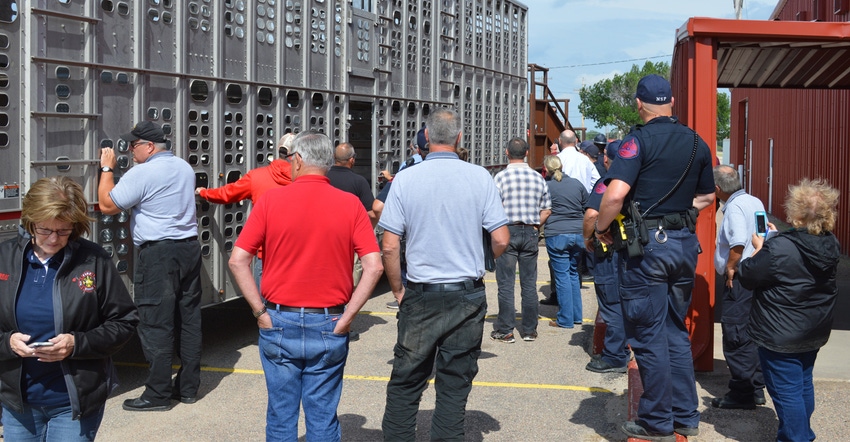
With around 3.6 million head of pigs, 6.8 million head of cattle and 9.5 million birds, there are a lot of livestock in Nebraska. It's a top livestock-producing state, and thousands of head of livestock pass through the state, transported to feeding operations or harvest facilities in a given year.
For the most part, these animals reach their destinations without any issues. But in the event of an accident involving livestock, it's important to be prepared.
"A group of BQA [Beef Quality Assurance program] coordinators from across the country saw a need to prepare first responders when they came up on an accident involving livestock," says Rob Eirich, BQA coordinator for Nebraska. "When approaching an accident with potential fatalities, human injury, with the added component of live animals, they saw a need to prepare first responders and emergency managers for approaching and handling those accidents."
This led to the development of National Beef Quality Assurance program's Bovine Emergency Response Plan (BERP), which provides training to first responders arriving on the scenes of accidents involving livestock.
While Nebraska is the Beef State, there are plenty of other species of livestock that are transported to and from Nebraska. So, recently, Nebraska BQA launched its own Livestock Emergency Responder Preparedness (LERP) program, with the support of Nebraska Extension, the Nebraska Department of Agriculture and the Nebraska Beef Council.
The program's goal is to provide training to help first responders develop their own livestock emergency response plan. This includes training on steps for corralling livestock that are no longer in the trailer, removing livestock from a trailer if they are trapped, assessing injured livestock, performing humane euthanasia when necessary, and managing traffic and any bystanders.
However, the first step, Eirich notes, is assessing the situation.
"The dispatcher may be able to get more information if they know it's an accident involving livestock — and what kind of livestock," he says. "If that's the case, coming up onto that accident with sirens and lights blaring may not be the best scenario. If possible, it's best to set up some parameters in advance, and come in and give a better assessment of the accident itself."
This includes determining where the livestock came from and where they are heading, which may have different biosecurity considerations. It's also important to consider the kind of livestock involved. For example, if a milking dairy cow is involved, there are now considerations regarding whether or not she needs to be milked.
And different species of livestock respond differently to different stressors. The training sessions provide instructions and hands-on training with live animals.
For example, if a cattle trailer has laid over on its side, there's a chance cattle have gotten out. In these situations, understanding cattle flight zones, depth perception and how cattle respond to outside different stressors could help prevent further injury to the cattle or people involved.
"Cattle are colorblind and don't have a lot of depth perception. With bright, flashing lights or a spotlight shining right on them, it's a different scenario for them compared to us as humans," Eirich says. "Shining a bright light probably isn't going to get them to move the direction you want."
It's also important to know key contact people in case of an emergency, says Kim Clark, Nebraska Extension dairy educator. As part of the training, attendees receive a checklist for these contacts, including a state or local veterinarian who may be available in the region, and whom responders and haulers can contact for, say, cattle panels if animals are loose and need to be corralled, or captive bolts if any animals need to be euthanized. It's also important to have a backup plan for each of these steps. For example, what if the normal contact person isn't available?
"We don't provide the answers, but we encourage participants and agencies to develop a plan for emergency situations," Clark says. "It's up to those first responders to identify those contacts and make those connections ahead of time."
Participants who complete the training can purchase a manual, and will receive a certificate of completion. The first training session was held last summer, with the second coming up in December. Additional sessions are being planned for spring.
"We can only train so many people at one time. But we want this training to be impactful, so we hope attendees will go back and work with their peers, or departments in neighboring communities," says Clark. "We want that multiplier to happen."
To learn more, visit bqa.unl.edu/lerp.
About the Author(s)
You May Also Like






